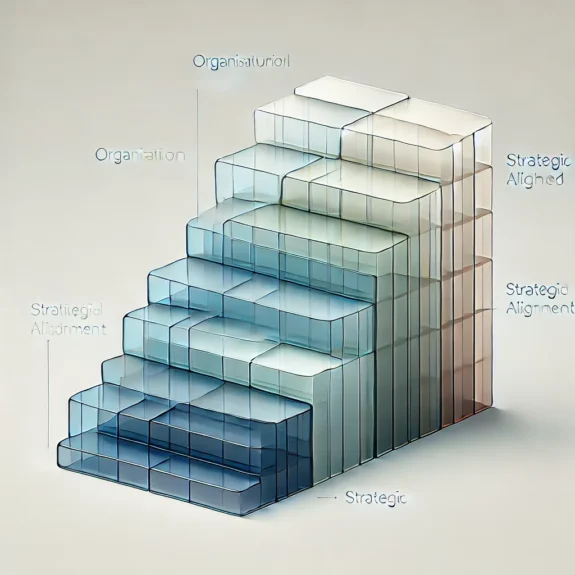Four barriers to AI adoption in the Enterprise – Transcript
In this video series, I’m arguing that we should manage AI as an asset—not purely to control its costs and risks, but also to unlock innovation and give our teams the freedom to experiment and progress more rapidly. In the previous video, we explored three types of AI commonly used in the enterprise. Now, I’d like to focus on the barriers preventing many organisations from fully embracing AI in the first place.
According to research, there are four main obstacles, and I’ll address them in ascending order of significance.
Four barriers to AI adoption:
1. Organisational Readiness
The least pressing barrier, yet still a critical one, is about preparing your enterprise to handle AI. This goes beyond having the right data or technical infrastructure. It’s about people, culture, and mindset. Fear and uncertainty about what AI might mean for jobs and operations are common. To move forward, we need to work on bringing everyone along—ensuring colleagues understand the value, feel comfortable with the change, and have confidence in the tools. In many respects, technology may be the simplest part. Gaining buy-in and ensuring data is properly curated for AI initiatives is trickier.
2. Lack of Expertise
A great AI idea won’t get off the ground without the right people behind it. Expertise is in high demand and often hard to come by. From selecting appropriate technologies to integrating AI solutions with existing systems, skilled professionals are needed at every step. Without them, even the most promising projects may falter or fail to progress beyond initial proofs of concept.
3. Lack of a Defined Budget
Next, we encounter a very familiar story in the realm of emerging technology: funding. Many enterprises are testing AI solutions without a clear plan for ROI, simply because they see potential strategic value. While this is a common pattern, it results in ad-hoc investment and uncertainty around long-term sustainability. Formalising a budget and justifying costs becomes much easier if we treat AI like an asset—applying the same discipline we use for more established IT resources.
4. Lack of Trust
Finally, the largest barrier to AI adoption is trust. Organisations worry about the reliability of AI outputs—“hallucinations” and poor results from immature systems only heighten scepticism. Add to that the intense focus on security, privacy, and intellectual property. With AI potentially scanning sensitive contracts, HR documents, or proprietary data, leaders question where their information resides and how it will be used. These concerns aren’t unique to AI, but the scale, speed, and power of these technologies amplify them, making trust-building a major undertaking.
Raising these barriers isn’t meant to discourage us—it’s a call to action. By applying proper governance, treating AI as a strategic asset and giving our teams guardrails, we can help them experiment safely and confidently. Doing so breaks down these walls, paving the way for more informed investment, robust expertise, and a cultural environment where trust can flourish.
In the next video, we’ll examine the risks unique to enterprise AI. We’ll also explore what kind of team and skill sets are required to address those risks head-on.
View the video on Youtube here: https://youtu.be/gKbdDAzLvg4

